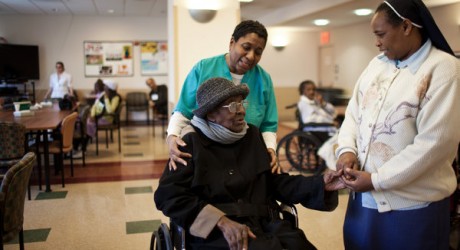By Caribbean Medical News Staff
A recent study revealed that many nursing home residents who underwent lower extremity revascularization (the restoration of the blood circulation of an organ or area, by unblocking obstructed or disrupted blood vessels or by surgically implanting replacements) have died, did not walk or had functional decline following the procedure.
Revascularization to the lower extremity is frequently performed so patients with peripheral arterial disease can maintain the ability to walk, which is a critical factor of functional autonomy. However, outcomes among patients with high levels of functional dependence, like nursing home residents, are usually misunderstood, according to research.
In a study with 10,784 long-term nursing home residents (37 percent were men, average age 82) who underwent the revascularization procedure, 67 percent of the cases were performed electively. Before surgery, 75 percent of the nursing home residents were not walking and 40 percent had experienced functional decline. According to the findings one year post surgery, 51 percent of the patients had died, 28 percent were not walking and 32 percent had sustained functional decline.
Interestingly, even patients who were walking before surgery did not thrive: among 1,672 nursing home residents who were ambulatory before surgery, 63 percent died or were non-ambulatory at one year post surgery. Among the 7,188 patients who were non-ambulatory before surgery, 89 percent had died or were non-ambulatory at one year.
34 percent of the nursing home residents who were ambulatory before surgery became non-ambulatory and 24 percent who were non-ambulatory at baseline became ambulatory, highlighted the results.
The research established that dying or being non-ambulatory was linked with factors like being 80 years or older, cognitive impairment, congestive heart failure, renal (kidney) failure, emergency surgery, not walking before surgery and a decline in activities of daily living (ADLs) before revascularization.
- Home
- News
- Views
- Opinion
- Editorial
- Features
- Clinical
- Regions
- Anguilla
- Antigua and Barbuda
- Bahamas
- Barbados
- Belize
- Bermuda
- British Virgin Islands
- Cayman Islands
- Dominica
- Grenada
- Guyana
- Jamaica
- Montserrat
- Saint Kitts and Nevis
- Saint Lucia
- Saint Martin
- Saint Vincent and the Grenadines
- Saint-Barthélemy
- Trinidad and Tobago
- Turks and Caicos Islands
- US Virgin Islands














